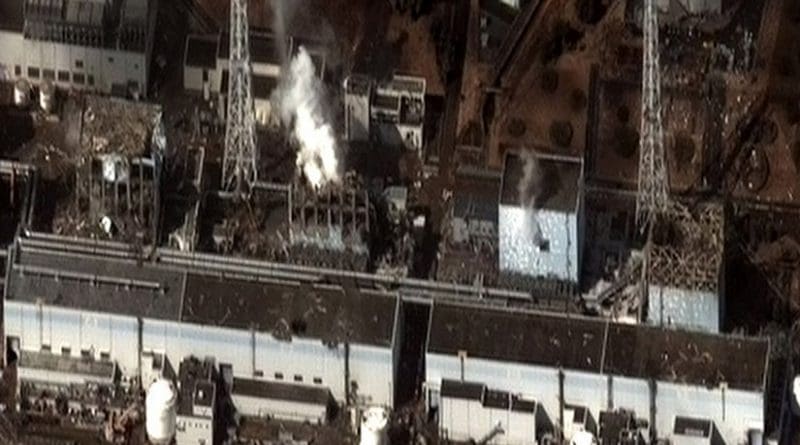Japan Nuclear Crisis: Trench Water Under Investigation
Contaminated water at the Fukushima Daiichi site is also present in trenches alongside the reactor buildings.
The discovery by Tokyo Electric Power Company (Tepco) is the latest puzzle at the Fukushima Daiichi site, at which four nuclear power units are written off after being inundated by the 14-metre tsunami of 11 March.
In recent days it has been announced that pools of water in the basements of the turbine buildings of units 1, 2 and 3 contain significantly elevated radioactivity. Three workers were taken to hospital after exposure to the water, but have now been discharged with no ill effects.
Judging by the composition of the radionuclides, officials think the water was probably in contact with the damaged reactor cores in each unit. Its presence indicates a leak from the primary circuit.
This water is being pumped out of unit 1 so that cabling can take place in support of the restoration of power from diesel generators. Preparations for this are taking place at units 2 and 3.
Trenches
Meanwhile, water with contamination enough to cause dose rates of up to 1000 millisieverts per hour has been discovered in a trench for power cables and pipes alongside unit 2’s turbine building.
The concrete trench is 76 metres long, four metres high and three metres wide and full with water to one metre from the top. Similar trenches exist at units 1 – which is full to within ten centimetres of the top but showed only 0.4 millisieverts per hour – and at unit 3, but this one was too clogged with tsunami debris to measure.
The trenches are outside the normal radiation control area of the site but do not lead to the sea, said Tepco. The company has sandbagged the one outside unit 2 to ensure it will not overflow and is working to find out how the water may have got into the trenches.
Discharges to sea
The overall amount of radioactivity in seawater, as well as the amounts of radionuclides, near Fukushima Daiichi has been trending down in the last two days, although some remain far beyond normal regulatory limits. Ten kilometres to the south at the undamaged Daini plant levels have increased in the same period – indicating a flow of water and the dispersal of the substances to sea.
There is currently an unclear picture of water travel around the site, including how some radionuclides travelled from reactor cores or used fuel ponds to current locations. Since the accident began over 18 days ago, water has apparently leaked within the buildings, been repeatedly sprayed into used fuel ponds and dropped by helicopter. In addition has come rain and snow.
Researched and written by World Nuclear News

